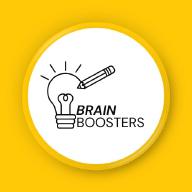What’s covered (at a glance)#
KS3 maths is organised into these domains: Number, Algebra, Ratio & Proportion, Geometry & Measures, Probability, and Statistics. Typical content includes: negative numbers and indices; fractions/decimals/percentages; equations and inequalities; sequences; graphs (including straight-line graphs); ratio, scale and percentage change; area, volume and similarity; Pythagoras’ theorem and right-triangle trigonometry; averages, representations and experimental probability. (GOV.UK)
Common sticky spots#
- Algebraic manipulation: rearranging, expanding/factorising, and solving multi-step equations/inequalities. (GOV.UK)
- Fractions ↔ decimals ↔ percentages in multi-step contexts (ratio, growth/decay, reverse problems). (GOV.UK)
- Graphs & functions: linking tables, equations and coordinates; interpreting gradients/intercepts. (GOV.UK)
- Geometry with reasoning: angle proofs, similarity, and moving from measuring to proving. (GOV.UK)
- Right-triangle methods: choosing between Pythagoras and trig, and setting up diagrams correctly. (GOV.UK)
- Data & probability language: selecting the right representation and justifying conclusions. (GOV.UK)
How I support your child#
- Bridging plan from KS2 → KS3: quick diagnostic to spot gaps; targeted fluency on the essentials. (GOV.UK)
- Concrete → pictorial → abstract (e.g., algebra tiles for expansion/factorising) to make new ideas stick. (GOV.UK)
- Explicit teaching + worked examples, then guided practice and short retrieval to keep knowledge fresh. (GOV.UK)
- Reasoning talk: sentence stems and structured explanations so pupils can show the “why,” not just the “how.” (GOV.UK)
- Calm confidence culture: mistakes are information; small wins each lesson; clear next steps shared with parents.
